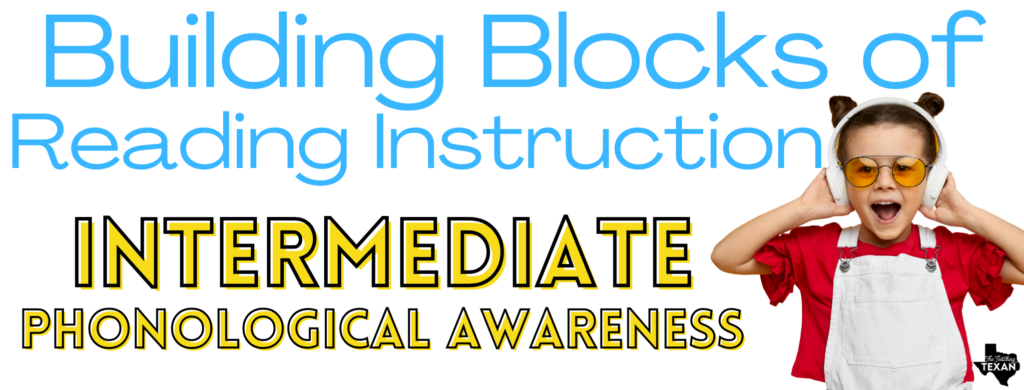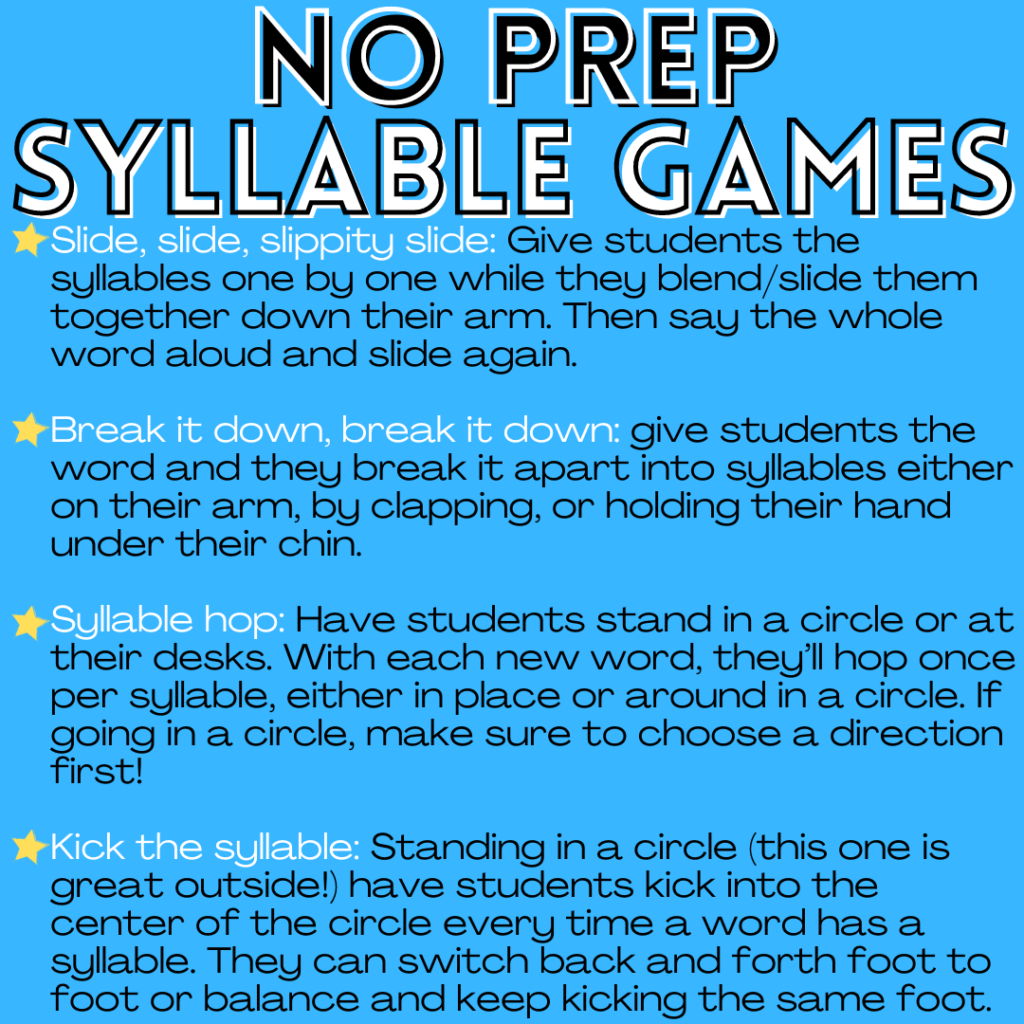Building Blocks of Reading: Intermediate Phonological Awareness
Hey y’all! Welcome back to this series where we’re building student reading skills from the ground up. This week, we’re continuing our exploration with intermediate phonological awareness. Back in January, we began by boosting the vital skills of rhyming and alliteration, the very beginning of phonological awareness (alongside listening). Both rhyming and alliteration are necessary precursors to the building blocks we’ll be discussing today.

Specifically:
- Sentence segmenting
- Syllable blending and segmenting
- Onset-rime blending and segmenting
As teachers, we must ensure children have the proper foundation for what a word is and how it’s used within language before we lead children to successfully master phonological awareness skills. Cementing this definition in place may take several whole or small group discussions and activities, but it’s essential to success.
A word can be spoken or written. It represents a thing, an idea, a place and more. When written, words are made out of letters. When spoken, these letters form sounds (phonemes).
Sentence Segmenting
Once students have an understanding of what words are and how they are used in written and spoken language, because we’re reading aloud to them MULTIPLE times a day to reinforce this knowledge, we can begin to discuss what a sentence is in the classroom.
A sentence is a group of words that tells WHO and WHAT.
This is simple to reinforce during read-alouds with students by first reading a sentence to students then asking them WHO the sentence is about and WHAT action they are doing. Remember, this is an auditory skill, so it’s not necessary to show students the sentence. It’s a skill they can sharpen by listening and responding.
As students gain an understanding of what a sentence is about you can progress by having them segment the sentence or count the number of words in the sentence. This can be done on their fingers, mentally, OR by having students draw a line on a piece of paper or white board for each word as they say the sentence aloud.
It can be fun to make this into a guessing game. You can make up a sentence and have students count the words. The quickest student to answer with the correct answer can make their own sentence next! Or have students partner up with their neighbor and “trade” sentences. One says a short sentence (they can make it up or repeat a sentence from the story) while the other counts the words, then they swap. This could even integrate with math by having students “buy” sentences with pennies or other coins. Pat, I’d like to buy a sentence! 😝
Syllable Blending and Segmenting
Once students gain proficiency when segmenting sentences, it’s time to move them into segmenting words into their parts – syllables. It’s important to be explicit here: use the word syllable as you explain what they are.
ALL words have one or more syllables. Every syllable consists of a vowel sound and may or may not be surrounded by consonants.
This may be less appropriate to focus on in kindergarten (especially early on) but first and second grade students can certainly understand this entire concept.
I recommend starting by simply counting syllables in a word. First, model it for students. You can clap them out, but having students hold their hand under their chin to FEEL each time they open their mouth to voice the syllable is usually more effective. You can also have them clench their lips together and say (or try to say) the words. Each time they want to open their mouth they are producing a syllable!
I love to practice syllables with these simple oral games!

Onset-Rime Blending and Segmenting
Finally (for today), as students move towards mastery with blending and segmenting syllables, they are ready to move to blending and segmenting onset and rime.
“Quick refresher on onsets and rimes: Onsets are any consonant sounds that come before the vowel in a syllable; the vowel and any consonant sounds that follow in that syllable are the rime” (pg. 31, Liben and Liben, 2019).
What we’re essentially doing here is taking the syllables they’ve been working on and breaking them down even further. Unlike with syllables, it’s not necessary to use the words onset and rime to teach this skill. But it may be helpful for students to associate rime with the “other” rhyme. You might also explain that onset and rime are what make word families!
Luckily, all the easy oral games outlined above work spectacularly to master onset and rime as well. Plus, when students are ready, both Slide and Break it Down are great ways to help them segment and blend CVC words and CCVC words.
References:
Know Better, Do Better, Liben and Liben, Learning Sciences International, 2019.
Fun-a-Day Blog, Shared by Mary Catherine. — Syllable Hop and Kick the Syllable are both adapted from Mary’s work.
